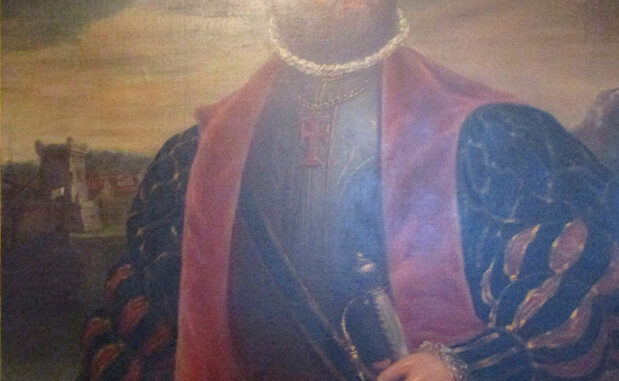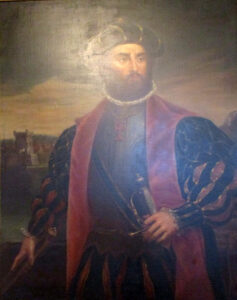
Through history we can learn that Europeans were pioneers in discovering new nations and discovering many secrets about the earth. The vision of many nationalist explorers was mostly on India. This is because many of the products found in India were highly welcomed by Europeans. They include not only pebbles, but also spices such as pepper and cloves.In the past all these products were brought to Europe by land Went. Several intermediaries were spotted along the way.However, its safety was questionable as the terrain was too far away. Due to the lack of air connectivity during that period, Europeans decided to trade from Europe to India by sea.Security of goods if doing so by sea Their dream is to increase and sell it cheaply. This later helped them to trade by sea. One of the Portuguese explorers in India in 1498.He left his footprint in Kozhikode and remembered the dream of the Europeans.Thus an uncle who remembered the dream of the Europeans That’s what we’re going to find out now. He was the Vasco da Gama who discovered the sea route from Europe to India and made world history.
Birth and family life of Vasco da Gama:
Vasco da Gama was born in 1460 into a wealthy family in Sines, on the southwest coast of Portugal. His father (Estevao da Gama) was Estevao da Gama and mother (Isabel Sodr)) Isabel Sodré. His father was also a traveler. He was one of those who tried to find a sea route to India. However he died without fulfilling that dream. She would not have even thought that her son would turn his dream into a memory.
First sea voyage:
After the death of Vasco da Gama’s father, King John II of Portugal asked Vasco da Gama to complete the task. Vasco da Gama served for some time as an officer in the Navy. So when the king told him to find a sea route to India, he gladly accepted and set out to do so. On July 8, 1497, 4 ships sailed from Lisbon, the capital of Portugal.They were called Sao Gabriel, Sao Rafael, Berrio, starship. A total of 170 of those 4 ships set sail for India under the leadership of Vasco da Gama. They sailed for more than 90 days. They reached the Cape of Good Hope on the 22nd of November that year in the southern tip of Africa. They then set sail northward off the coast of Africa.
Natal :
Natal means Christmas in Portuguese. Vasco da Gama named the area Natal because their ship sailed to the east coast of Africa as Christmas approached that year. It is still called by that name.Vasco da Gama then landed in Mombasa, Mozambique and Malindi, which were under the control of Islamic merchants. The Islamic merchants saw him as his enemy, thinking that they would harm their trade. They also tried to seize his ships. Broke it.
Arrival at Kozhikode:
Vasco da Gama also accompanied a Gujarati sailor on his journey to Malindi. On the advice of Ammalumi, Vasco da Gama sailed for 23 days to detect climate change in the Arabian Sea. May 20, 1498 is a historic day.The port of Kozhikode in Kerala was the most important trading center of South India. Samudiri (Zamorin) who was ruling Kozhikode at that time welcomed King Vasco da Gama. However he was very angry that Vasco da Gama did not give him the items he needed as a gift. Moreover, he did not want to annoy the local merchants and refused to enter into his trade agreement with the Portuguese.
Commander of the Indian Ocean:
Vasco da Gama continued his journey to Lisbon on August 29 with a large supply of Indian spices. The journey was so severe that many of his soldiers died of Scurvy along the way. Only 2 of the four ships that sailed after more than a year arrived safely in Portugal.Of the 170 people on board, only 55 returned home. The king welcomed Vasco da Gama, who had returned to the country two years later, with a large gift. He was also honored with the title of Commander-in-Chief of the Indian Ocean. The king rejoiced that the dream of more than 80 years had come true.
Second trip to India:
Vasco da Gama left for India again three years later. This time he sailed with twenty ships with a plan to oppose the Muslim merchants who opposed him. History has it that he was involved in many atrocities during the voyage.He killed many Indians who refused to trade with the Portuguese. At one point, he hijacked a ship, looted everything, locked 380 passengers found on board and set the ship on fire. Thus everyone on board died tragically.
Chicken attack:
When Vasco da Gama arrived at Kozhikode for the second time, Samudiri asked the king to expel the Muslims from there. The king hesitated and thus Vasco da Gama mercilessly killed 38 people and left their bodies floating in the sea.He then bombed the port of Kozhikode. King Samudiri made a trade treaty with him with no other option. Vasco da Gama established several Portuguese colonies in East Africa during his return to Portugal with that agreement.
Third trip to India:
Vasco da Gama was appointed as India’s Deputy State Treasurer on his third visit to India. However, he fell ill in a few months and died in Kozhikode on December 24, 1524. His body was buried in a church in Cochin and the rest was sent to Portugal in 1539.The discovery of Vasco da Gama is one of the most important historical achievements in the history of the world. After he found the sea route to India, the nations of the world began to realize its direct trade benefits. There were direct contacts between India and Europe. Vasco da Gama’s first voyage was the main reason for the formation of Portuguese shoes in many countries.The book ‘Lusiadas’, which covers his travel experiences, is considered the national epic of Portugal. How many of us would take advantage of that opportunity if we had the opportunity to embark on the most dangerous journey towards something undiscovered or unknown. The unwritten truth is that if we see the dangers and leave, the achievements will leave us.

Leave a Reply